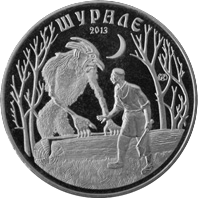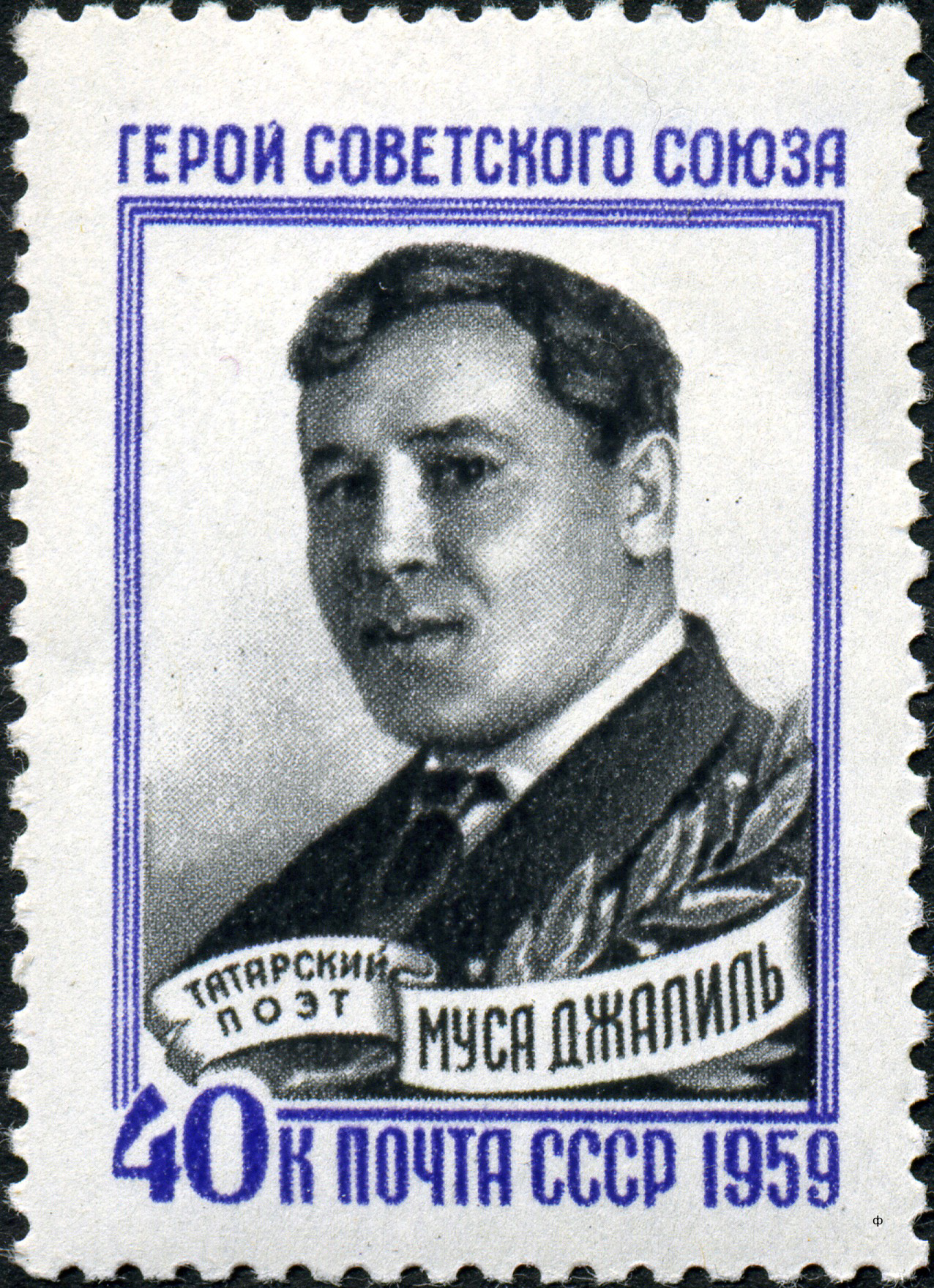|
Tatar Music
Tatarstan is an autonomous republic within Russia, where the largest ethnic group are the Tatars. Their traditional music is a mixture of Turkic, Mongolic and Finnic elements, reportedly bridging Mongolian and Hungarian music. Nonetheless, the most distinguishing feature of Tatar music is the pentatonic scale, which aligns it with the Chinese and Vietnamese musical traditions. Instrumental dance music, secular song and sacred music are all a part of Tatar folk music. Instrumentation includes the kubyz ( jaw harp), surnay, quray ( flute) and garmon-talianka. In the mid-20th century, a number of Tatar composers became renowned, including Cäwdät Fäyzi, Salix Säydäş, Mansur Mozaffarov and Näcip Cihanov. Many of the works of the Russian-Tatar composer Sofia Gubaidulina have been inspired by Tatar music. The largest center of Tatar national music is the Jalil Opera and Ballet Theatre named after Musa Cälil. The first Tatar opera, ''Saniä'', was staged in 1925. It ... [...More Info...] [...Related Items...] OR: [Wikipedia] [Google] [Baidu] |
Tatarstan
The Republic of Tatarstan (russian: Республика Татарстан, Respublika Tatarstan, p=rʲɪsˈpublʲɪkə tətɐrˈstan; tt-Cyrl, Татарстан Республикасы), or simply Tatarstan (russian: Татарстан, tt-Cyrl, Татарстан), sometimes also called Tataria (russian: Татария, tt-Cyrl, Татария), is a Republics of Russia, republic of Russia located in Eastern Europe. It is a part of the Volga Federal District; and its capital city, capital and largest city is Kazan, an important cultural centre in Russia. The republic borders Kirov Oblast, Kirov, Ulyanovsk Oblast, Ulyanovsk, Samara Oblast, Samara, and Orenburg Oblasts, the Mari El Republic, Mari El, Udmurt Republic, Udmurt, and Chuvash Republics, and the Bashkortostan, Republic of Bashkortostan. The area of the republic is . The unofficial Tatarstan motto is ''Bez Buildırabız!'' (''We can!''). As of the Russian Census (2021), 2021 Census, the population of Tatarstan was& ... [...More Info...] [...Related Items...] OR: [Wikipedia] [Google] [Baidu] |
Garmon
The garmon ( rus, гармо́нь, p=gɐˈrmonʲ, links=yes, from rus, гармо́ника, p=gɐˈrmonʲɪkə, r=garmonika, cognate of English ''harmonica''), commonly called garmoshka, is a kind of Russian button accordion, a free-reed wind instrument. A garmon has two rows of buttons on the right side, which play the notes of a diatonic scale, and at least two rows of buttons on the left side, which play the primary chords in the key of the instrument as well as its relative harmonic minor key. Many instruments have additional right-hand buttons with useful accidental notes, additional left-hand chords for playing in related keys, and a row of free-bass buttons, to facilitate playing of bass melodies. The term "Garmon" means overcomer, winner or "noble" believed epistemologically to derive from the term for "blue" which nobility wore. It is believed perhaps Russian aristocratic, tzars and or royal leadership had garmons played in their courts. The garmons can be of ... [...More Info...] [...Related Items...] OR: [Wikipedia] [Google] [Baidu] |
Almaz Monasypov
Almaz Monasypov ( tt-Latn, Almaz Zakir ulı Monasıypov, , 1925–2008) was a composer of Tatar origin. He was an art worker of the Russian Soviet Federative Socialist Republic (1987), People's Artist of the Tatarstan Republic (2000), and laureate of the State Prize of the Republic of Tatarstan named after Gabdulla Tuqay (1991). He is one of the first Tatar composers to re-embodied in modern music the ancient layers of the national tradition like baits ( tt-Cyrl, бәет), munajats ( tt-Cyrl, мөнәҗәт), and book singing ( tt-Cyrl, китап көе). The Symphony-poem "Musa Jalil" (Symphony II) and the vocal-symphonic poem "In the rhythms of Tuqay" ( tt-Cyrl, Тукай аһәңнәре, ) are recognized as Tatar national musical classics. Life and career Almaz Monasypov was born on 11 July 1925 in Kazan. His family often played music and his father loved to play the violin. At the age of eleven, Monasypov entered the children's music school in Kazan to learn to pl ... [...More Info...] [...Related Items...] OR: [Wikipedia] [Google] [Baidu] |
Şüräle
Shurale (Tatar and Bashkir: Шүрәле, �yræˈlɘ russian: Шурале) is a forest spirit in Tatar and Bashkir mythology. According to legends, Şüräle lives in forests. He has long fingers, a horn on its forehead, and a woolly body. He lures victims to a thicket and can tickle them to death. Şüräle closely resembles other similar characters from the folklore such as Arçuri of the Chuvash, Pitsen (Picen) of the Siberian Tatars and Yarımtıq of the Ural Tatars. Description He can shapeshift into many different forms. As a human, he looks like a peasant with glowing eyes, and his shoes are on backwards. A person who befriends Şüräle can learn the secrets of magic. Farmers and shepherds would make pacts with the leshy to protect their crops and sheep. Şüräle has many tricks, including leading peasants astray, making them sick, or tickling them to death. They are also known to hide the axes of woodcutters. A person gets lost in the woods when a Şüräle cross ... [...More Info...] [...Related Items...] OR: [Wikipedia] [Google] [Baidu] |
Ballet
Ballet () is a type of performance dance that originated during the Italian Renaissance in the fifteenth century and later developed into a concert dance form in France and Russia. It has since become a widespread and highly technical form of dance with its own vocabulary. Ballet has been influential globally and has defined the foundational techniques which are used in many other dance genres and cultures. Various schools around the world have incorporated their own cultures. As a result, ballet has evolved in distinct ways. A ''ballet'' as a unified work comprises the choreography and music for a ballet production. Ballets are choreographed and performed by trained ballet dancers. Traditional classical ballets are usually performed with classical music accompaniment and use elaborate costumes and staging, whereas modern ballets are often performed in simple costumes and without elaborate sets or scenery. Etymology Ballet is a French word which had its origin in Italian ... [...More Info...] [...Related Items...] OR: [Wikipedia] [Google] [Baidu] |
Vasili Vinogradov
Vinogradov Vasily Ivanovich (; Vasili Vinogradov, russian: Виногра́дов Васи́лий Ива́нович; 1874–1948) was an ethnically Russian Tatar opera composer, violinist and pedagogue. TASSR Honoured Worker of Culture (1944). In collaboration with Ğäziz Älmöxämmädev and Soltan Ğäbäşi he composed first Tatar opera Opera is a form of theatre in which music is a fundamental component and dramatic roles are taken by singers. Such a "work" (the literal translation of the Italian word "opera") is typically a collaboration between a composer and a libr ...s, ''Saniä'' (1925) and ''Eşçe (The Worker)'' (1930). Vinogradov also composed many symphonic concertos, based on traditional Tatar and Bashkir music, music for dramatic plays, arrangement of folk music. References and notes * 1874 births 1948 deaths Russian composers Russian male composers Soviet composers Soviet male composers Tatar music 20th-century Russian male mu ... [...More Info...] [...Related Items...] OR: [Wikipedia] [Google] [Baidu] |
Soltan Gabashi
The Soltan Mosque ( Cyrillic: Солтан мәчете; formerly ''Cihanşa bay Mosque'', ''The Red Mosque'', ''Ğosman Mosque'', ''The Eighth Mosque'', also spelled '' Sultan'' or ''Sultanovskaya'' via Russian Султановская мечеть) is a mosque in Kazan, Russia. History It was built in 1868 on the donation of merchant Cihanşa Ğosmanov. The mosque is built in traditions of the Tatar-Bolghar medieval architecture combined with ''national romance'' style. There is one hall with entresol. The three-storied minaret is placed over the entry. In 1931 the mosque was closed by the Soviet authorities. In 1990 the minaret was restored, in 1994 the mosque was returned to believers. Gallery File:KazanjSultanaMoskeo.jpg File:Tuqay street and Soltan mosque minaret.JPG See also *Islam in Tatarstan *Islam in Russia * List of mosques in Russia *List of mosques in Europe This is a partial list of mosques in Europe. ;Group See also * Lists of mosques * Islam in Europ ... [...More Info...] [...Related Items...] OR: [Wikipedia] [Google] [Baidu] |
Opera
Opera is a form of theatre in which music is a fundamental component and dramatic roles are taken by singers. Such a "work" (the literal translation of the Italian word "opera") is typically a collaboration between a composer and a librettist and incorporates a number of the performing arts, such as acting, scenery, costume, and sometimes dance or ballet. The performance is typically given in an opera house, accompanied by an orchestra or smaller musical ensemble, which since the early 19th century has been led by a conductor. Although musical theatre is closely related to opera, the two are considered to be distinct from one another. Opera is a key part of the Western classical music tradition. Originally understood as an entirely sung piece, in contrast to a play with songs, opera has come to include numerous genres, including some that include spoken dialogue such as '' Singspiel'' and '' Opéra comique''. In traditional number opera, singers employ two styles of ... [...More Info...] [...Related Items...] OR: [Wikipedia] [Google] [Baidu] |
Musa Cälil
Musa Cälil ( tt-Cyrl, Муса Җәлил, translit=Musa Çəlil, ; russian: Муса Джалиль; 25 August 1944) was a Soviet–Tatar poet and resistance fighter. He is the only poet of the Soviet Union awarded simultaneously the Hero of the Soviet Union award for his resistance fighting and the Lenin Prize for having written ''The Moabit Notebooks''; both awards were bestowed upon him posthumously.Mussa Jalil. Selected poems. Poetry of Truth and Passion. Rafael Mustafin, translated by Lydia Kmetyuk. Moscow, Progress Publishers, 1981 Biography Early life Musa Cälil was born in Mustafino, a village in Orenburg Governorate, to a family of junk dealers. He graduated from in Orenburg. His first published works were revolutionary verses. The Turkic '' aruz wezni'' poetic rhythm is seen in Cälil's early works, which is attributed to ''Gisyanism'' (; гыйсъянизм), a romantic poetic style celebrating revolution that was often found in young Tatar poetry of the 192 ... [...More Info...] [...Related Items...] OR: [Wikipedia] [Google] [Baidu] |
Sofia Gubaidulina
Sofia Asgatovna Gubaidulina (russian: Софи́я Асгáтовна Губaйду́лина, link=no , tt-Cyrl, София Әсгать кызы Гобәйдуллина; born 24 October 1931) is a Soviet-Russian composer and an established international figure. Major orchestras around the world have commissioned and performed her works. She is considered one of the foremost Russian composers of the second half of the 20th century. Family Gubaidulina was born in Chistopol, Tatar Autonomous Soviet Socialist Republic (now the Republic of Tatarstan), Russian SFSR, to an ethnically mixed family of a Volga Tatar father and an ethnic Russian mother. Her father, Asgat Masgudovich Gubaidulin, was an engineer and her mother, Fedosiya Fyodorovna (née Yelkhova), was a teacher. After discovering music at the age of 5, Gubaidulina immersed herself in ideas of composition. While studying at the Children’s Music School with Ruvim Poliakov, Gubaidulina discovered spiritual ideas and fou ... [...More Info...] [...Related Items...] OR: [Wikipedia] [Google] [Baidu] |
Näcip Cihanov
Näcip Ğayaz ulı Cihanov — Tatar Cyrillic: Нәҗип Гаяз улы Җиһанов, pronounced ; russian: Нази́б Гая́зович Жига́нов; anglicised as Najip Jihanov or, more usually, Nazib Gayazovich Zhiganov — was a Soviet and Tatar composer, pedagogue and statesman. He was born on in Uralsk; and died on 2 June 1988. Cihanov wrote eight operas (notably ''Altınçäç'' and '' Cälil''), three ballets, 15 symphonies, other symphonic works (''Qırlay'', ''Suite on Tatar Themes'', ''Näfisä'', ''Symphonic novellas'', and ''Symphonic Songs'' among them), the cantata ''Republic of Mine'' (1960), camera-instrumental compositions, and romances and songs. Granted the titles of People's Artist of the USSR (1957) and Hero of Socialist Labour (1981), Cihanov served as artistic leader of the Tatar Opera and Ballet from 1941 to 1943, chairman of Tatarstan's Composers Union from 1939 to 1977, and rector of Kazan Conservatory from 1945 to 1988. He was made profess ... [...More Info...] [...Related Items...] OR: [Wikipedia] [Google] [Baidu] |






